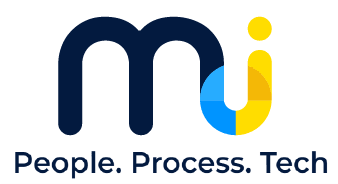Website Conversions rate optimization (CRO) is a crucial aspect of digital marketing that aims to improve a website’s performance by increasing the percentage of visitors who take a specific desired action. These desired actions may include making a purchase, filling out a form, or subscribing to a newsletter, depending on the website’s goals.
Here are a few ways to improve website conversions rates:
- Make sure your website is mobile-friendly: More and more people are accessing the internet on their smartphones, so it’s essential that your website is optimized for mobile devices. This includes ensuring that your site is responsive, loads quickly, and has easily-clickable buttons.
- Improve the user experience: Make it easy for visitors to find what they’re looking for by using clear and concise language, providing high-quality images, and making it easy to navigate your site.
- Use social proof: Including customer testimonials, reviews, and ratings can help build trust and credibility with potential customers.
- Make the value proposition clear: Make it clear to visitors what they will get by taking a certain action, whether it’s a discount, access to exclusive content, or something else.
- Test different versions of your site: Try different headlines, images, and call-to-action buttons to see which ones lead to the highest conversion rates. Use tools like A/B testing or multivariate testing to conduct these experiments.
- Use Retargeting and Remarketing: Retargeting, also known as remarketing, is a type of online advertising that allows you to show ads to people who have previously visited your website. By showing these users ads for your products or services, you can increase the chances of them returning to your site and converting.
- Enhance the speed of the website: Users are less likely to stick around on a website if it takes too long to load, so it’s essential to optimize the speed of your site. Use tools like Google’s PageSpeed Insights or GTmetrix to identify areas of improvement and work to optimize your site’s load times.
- Make it easy to buy or sign up: Minimize the number of clicks and form fields required to make a purchase or sign up for a service. The simpler the process the more likely people are to complete it.
- Optimize for SEO: Search engine optimization (SEO) can help increase the visibility of your website in search engine results pages (SERPs), which can lead to more traffic and more conversions. Make sure your website’s content and code are optimized for search engines and use keywords in your meta tags, URLs, and headings.
- Use a clear and compelling call-to-action (CTA): A clear and compelling CTA is essential to getting visitors to take the desired action. Make sure your CTA stands out, use action-oriented language, and make it clear what will happen when the visitor clicks.
- Personalize your website: Personalization can help increase conversion rates by making visitors feel more welcome and understood. Use tools like dynamic content, personalization software, or personalization cookies to show personalized content or offers to different users based on their behavior or preferences.
- Create a sense of urgency: Encourage visitors to take action by creating a sense of urgency. For example, you can use limited-time offers, countdown timers, or limited-quantity messages to create a sense of scarcity and urgency.
- Use Exit-Intent Pop-ups: Exit-intent pop-ups are overlays that appear when a visitor is about to leave a website. These pop-ups can be used to offer discounts, collect email addresses, or direct visitors to other pages on the website.
- Use Live Chat: Adding a live chat feature to your website can help increase conversion rates by providing visitors with immediate support and assistance. This can help address any concerns or questions visitors may have, which can make them more likely to convert.
- Monitor and Analyze Data: The key to a successful CRO is to continuously monitor and analyze data to see what works and what doesn’t. Use analytics tools to track conversion rates, bounce rates, and other key metrics, and use this data to make informed decisions about how to improve your website.
Overall, conversion rate optimization is an ongoing process that requires continuous testing, monitoring, and tweaking. By focusing on improving the user experience, building trust and credibility, and testing different elements of your website, you can increase the likelihood that visitors will convert into customers.
Implementing these methods will help you to improve your conversion rate and to grow your business. However keep in mind that conversion rate optimization is not a one-time task, it is an ongoing process and you will have to continuously monitor the results and improve it.
At MI Group, we provide comprehensive digital marketing services designed to help businesses of all sizes increase their website conversions and achieve their marketing goals. Our team of experienced professionals is equipped with the latest tools and strategies to help our clients improve their online presence and drive more traffic to their websites.


